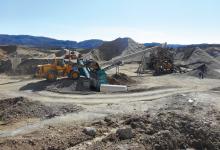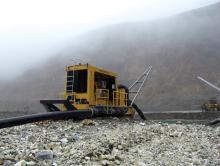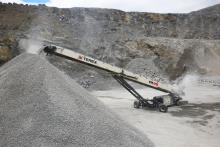
UK-based Hills Quarry Products says that up to 1,200 tonnes of aggregate per day can now be consistently extracted by avoiding pump failures following the conversion of a fixed speed motor to variable speed control at its Cerney Wick quarry site in Gloucestershire.
The company adds that the site demands a high volume of water which returns to a sump for pumping to a settling bed. Float level switches in the sump activate a fixed speed pump. However, the fixed speed could be too high for demand, leading to the sump running dry and the pump failing. In addition, because the motor only runs at one speed, the stress on the pump set could lead to broken transmission belts, motor overcurrent or blocked pumps, leading to costly failures, typically every two weeks.
“The pump could be out of action for a few hours to a full day, depending on if it was a simple belt change or if the pump needed to be raised from the sump,” said quarry manager Olly Thompson. “We extract between 1,000 and 1,200 tonnes of aggregate every day at Cerney Wick, so any downtime is extremely costly – not just in terms of lost production, but also due to the extra expenses incurred by our maintenance team and external contractors.”
A 55 kilowatt variable speed drive (VSD) and level control device were installed to automatically adjust the pump motor’s speed according to demand. A pressure transducer, installed in the sump, monitors water pressure. The VSD then calculates the water level that corresponds to this measured pressure, adjusting the pump speed to avoid overflows or the sump running dry.
“This system has reduced downtime, increased production and reduced the number of replacement drive belts as well as the cost of repairing the pump when it ran dry,” Thompson said. “As well as avoiding failures and the associated costs, we have also cut electricity usage on the application by around 50 percent by matching motor speed to demand, achieving further savings.”









